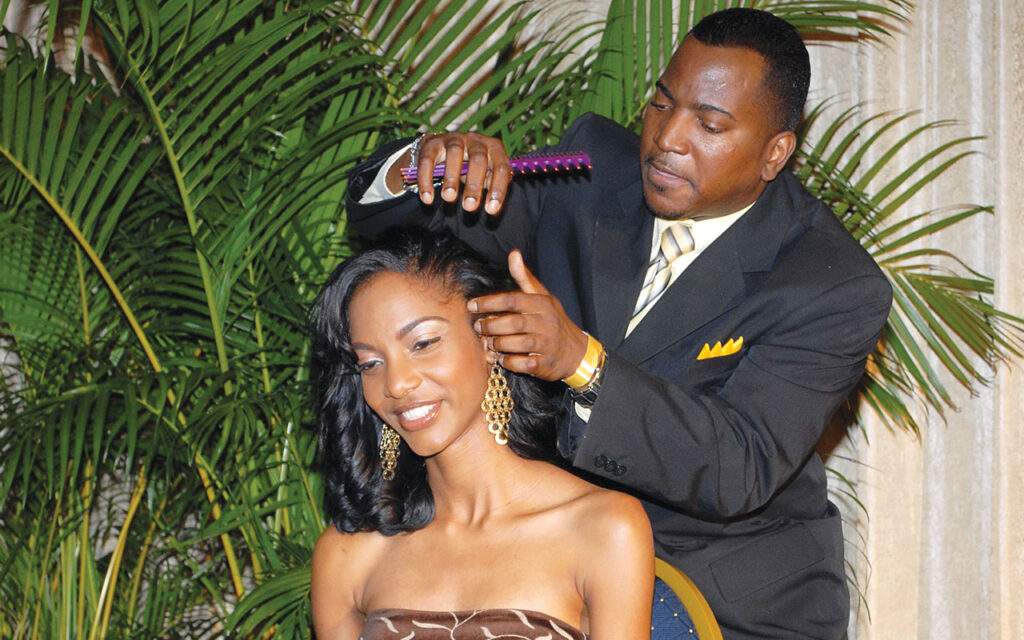Story by Nicola A. Cunningham
Did you know that every hair loss situation tells a story and no two hair tales are ever the same? The etiology of your journey may not be the same for someone else, even if the individual is related or lives a similar lifestyle. Indeed, the blueprint to hair loss at times is akin to your finger print: no two persons are exactly the same.
What this therefore means is that treating the condition requires a systematic approach and not a one-size-fits-all procedure. This is where a licensed ‘hair doctor’ who we called a Trichologist comes into play as the hair loss story becomes their compass and subsequent road map, leading them to the genesis or the root cause which they can then diagnose and take the necessary steps to take the client from balding to beautiful again.
Answering the call for healthy hair care is Karl Richmond, Trichologist and hair restoration specialist with over 25 years of experience in the business who has made it his duty to not only restore hair but just as importantly restore someone’s confidence and self-esteem because for many people, losing their hair can be a traumatic and terrifying experience. Clients who want to leave their hair in Richmond’s capable hands, first have to fill out an analysis guide form that details the person’s history going back at least two years because the more he knows, the better he can guide them through the restoration process.

“Normally when we do an assessment, we focus on three things namely circulation, nutrition and simulation. The consultation will capture some of the person’s history as anything that enters your bloodstream goes to your hair. If there are no circulation problems, then hair growth should be about half an inch every month. So as long as your body has the ability to pass blood around, your hair should grow.”
As Richmond explains it, there are some hairstyles that contribute to hair loss and there are some that do not help. “One size (style) does not fit all. You’re usually at the mercy of the hairstylists, especially if she is braiding the hair. Patches can be triggered by stress as well as a number of other things such as eczema, certain medications, birth control pills, surgery (hysterectomy), crash diets, thyroid issues, ringworms, syphilis and alopecia(female pattern baldness) just to name a few. Most disorders or problems can be fixed within the first two years. After that, it tends to linger.”
He also added that some disorders are transferable and can be avoided by not using other peoples’ brushes and combs.
“Ringworm is contagious so it
is not treated in the salon and because it is internal we also refer the individual to the doctor. Shaving off the hair is a thing that some use to disguise what is going on in the body but this does not cure or treat the problem.”
Trichologists also examine factors such as age and the process that women go through with hormonal changes. For example, pregnant women produce a larger amount of oestrogen which grows their hair exponentially.
Because this is proven science, taking hair vitamins that contain estrogen is often recommended and Richmond shared a story about how he assisted a woman who had been trying to get pregnant for 15 years, to finally achieve her dream of being a mother by starting her on hair vitamins. The birth control pill ‘Yaz’ is also said to actually aid hair growth.
While science can work wonders for hair growth, there are some myths that people should let go of if they truly want to see real results. “One myth is that keeping the hair natural is better. It’s not necessarily true as natural hair takes more time, takes more care and requires a lot more attention. Natural hair requires natural oils to keep it moisturised and while some oils work great together, others don’t. My advice is don’t use more than three together initially.
That way if one is not working you can identify which one it is quickly by a process of elimination. Also, some oils are too heavy so they block up the pores and remember that the scalp is the skin of the head so it has pores. Benjamin Cosmetics does make some interesting combinations of oils. There is black castor oil, lavender and coconut which makes perfect sense as coconut is what they call the ‘carrier oil’ and you can leave it in the hair. Argon oil is good, so too is onion oil. For the latter, a good product to use is Hebab Root Therapy Red Onion herbal all natural liquid oil.”
Unless something can be scientifically proven, he advised users to be careful of the things they hear other folks swear by. “Hair care is about creating a balance. Yes, it is normal to lose 100 to150 strands of hair daily but you actually replenish it just as quickly. When you lose a strand, a replacement strand is right beside it that is why you don’t get a gap. Also, most of the things we take into our bodies, impact the endocrine system and you have to be careful of that. 70% of most hair oil contains petroleum-based products which can be a coat that is too thick and heavy and if you have flakes or flaky scalp, it makes the condition worse.”

